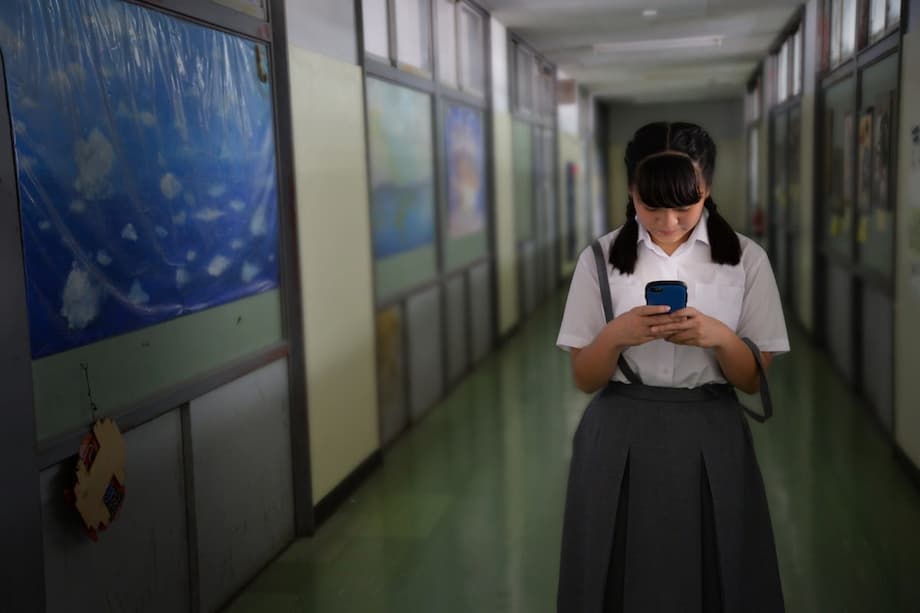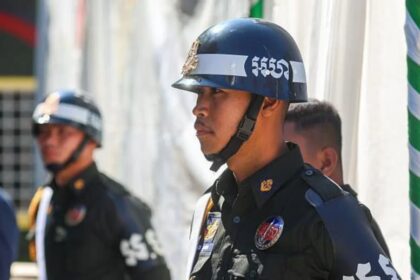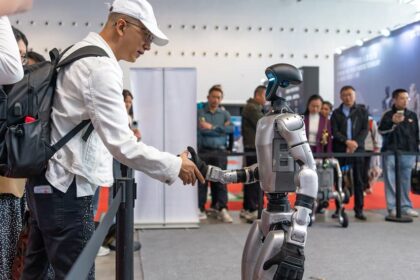Japan’s Hidden Camera Crisis: How Technology Enabled School Voyeurism
In recent years, Japan has faced a disturbing surge in cases of school voyeurism, driven by the proliferation of high-definition miniature cameras. These devices, originally marketed for security and crime prevention, have become tools for predatory behavior, especially in educational settings. The sophistication and accessibility of these cameras have outpaced legal and institutional safeguards, prompting a nationwide crackdown and igniting a debate about privacy, technology, and social responsibility.
- Japan’s Hidden Camera Crisis: How Technology Enabled School Voyeurism
- How Did Spy Cameras Become a Threat in Japanese Schools?
- Why Are Spy Cameras So Hard to Detect?
- Institutional Failures and the Role of Schools
- Countermeasures: Technology, Law, and Awareness
- Public Attitudes and the Challenge of Enforcement
- What More Can Be Done?
- In Summary
How Did Spy Cameras Become a Threat in Japanese Schools?
Miniature cameras, often no larger than a button or pen, have become widely available online and in electronics stores. Their intended use is to deter theft or harassment by providing discreet surveillance. However, their small size and ability to be disguised as everyday objects—such as clocks, pens, and even clothes hangers—have made them attractive to voyeurs seeking to secretly film students in vulnerable situations.
One of the most egregious cases occurred in May 2023, when a 38-year-old man was arrested in Kobe, western Japan, after police discovered several spy cameras hidden in hangers inside girls’ changing rooms at a high school. Authorities seized the hangers and two hard drives from his home, uncovering approximately 20,000 videos of female students in states of undress. According to court documents, the man had been secretly filming at schools in Kobe and other prefectures, including his hometown of Nara, since 2019.
These cameras are often motion-activated, starting to record only when movement is detected, making them even harder to spot. As one security goods retailer explained, the devices were intended to capture evidence of harassment or theft, not to be used for illicit filming.
“It’s unthinkable that they are being used for purposes other than crime prevention,”
the retailer told Kyodo News. Yet, the reality is that the technology’s misuse has become a serious social issue.
Teachers and Insiders: When Trust Is Betrayed
While some perpetrators are outsiders who break into schools, recent incidents have revealed that teachers themselves can be involved. In October 2024, a 24-year-old male teacher was arrested for attempting to take voyeuristic footage with a pen-shaped camera in a girls’ changing room at a junior high school in Tamba, Hyogo Prefecture. In May 2025, another teacher in Osaka Prefecture was summarily dismissed after installing a motion-sensor camera in a girls’ restroom. In June, two elementary school teachers were arrested for secretly filming girls and sharing the footage in a social media chat group, which included other teachers who praised the content.
These cases have shattered the sense of safety that students and parents expect from educational institutions, highlighting the urgent need for both technological and human safeguards.
Why Are Spy Cameras So Hard to Detect?
The rapid miniaturization and improved performance of surveillance technology have made covert cameras nearly invisible to the untrained eye. Devices can be embedded in everyday items, with only a tiny lens visible—if at all. The hanger-type camera used in the Kobe case appeared completely ordinary, and without close inspection, it was nearly impossible to detect the hidden recording medium.
Motion-activated features mean these cameras only record when someone is present, reducing the risk of being discovered by routine checks. The ease of online purchase and the lack of strict regulations on who can buy such equipment further complicate efforts to prevent abuse.
Legal and Regulatory Gaps
Japan’s legal framework has struggled to keep pace with technological advances. While there are laws against voyeurism and unauthorized photography, enforcement is challenging. Investigators have considered pressing charges against retailers for aiding and abetting voyeurism, but proving criminal intent is difficult when businesses claim their products are for legitimate security purposes.
Yusaku Fujii, a professor at Gunma University and an expert on privacy and surveillance, has called for stricter regulations, including a buyer registry system to track the sale and use of covert cameras.
“While cameras have advanced in miniaturization and performance, legal regulations to minimize their harm have not kept pace,”
Fujii warns.
Institutional Failures and the Role of Schools
Beyond technology, institutional lapses have contributed to the problem. In the Kobe case, the perpetrator exploited unlocked windows and poorly monitored areas to enter the school. He stole keys to the gymnasium and locker room, made duplicates, and returned them, allowing repeated access without detection. The school, believing the keys were merely lost or misplaced, failed to report the incidents to police, missing opportunities to prevent further crimes.
Naoya Hiramatsu, director of a national network for the prevention of voyeuristic crimes, emphasizes the importance of vigilance:
“Teachers must thoroughly monitor and manage classrooms, changing rooms, and restrooms, and ensure that students understand the risk of voyeurism, even at school.”
Social Media and the Spread of Illicit Content
The digital age has made it easier for voyeuristic images and videos to be shared widely and anonymously. In the June 2025 case, teachers formed a chat group to distribute and comment on illicit footage. This not only compounds the trauma for victims but also complicates law enforcement efforts, as content can quickly spread beyond the reach of authorities.
Countermeasures: Technology, Law, and Awareness
In response to the crisis, Japanese authorities are stepping up efforts to regulate the sale and use of spy cameras. Some prefectures, such as Fukuoka, have revised local ordinances to define sexual violence as including non-consensual photography, regardless of attire. While these measures often lack strict penalties, they aim to raise awareness and signal a zero-tolerance stance.
At the national level, a 2023 revision to sex crime laws introduced a new “photography offense,” but it excludes images taken over clothing, limiting its effectiveness against certain forms of voyeurism. Enforcement remains a challenge, particularly when it comes to distinguishing between legitimate photography and predatory behavior.
Technological Innovations: Fighting Fire with Fire
Some organizations and companies are developing countermeasures to protect potential victims. For example, Mizuno, a leading sportswear manufacturer, has created uniforms for Japan’s women’s national volleyball team that are resistant to infrared cameras. These garments use specially woven fibers containing minerals that absorb infrared rays, preventing cameras from capturing images beneath the fabric. The uniforms also offer improved ventilation and comfort, balancing protection with athletic performance.
Athletes themselves are taking action as well. Aiko Sugihara, a gymnast who competed in the 2016 and 2021 Olympics, launched a company to design leotards that provide more coverage, addressing both privacy and comfort concerns.
“Rather than overlooking issues specific to women, I wanted to offer new choices,”
Sugihara explains.
Surveillance, Privacy, and Social Control
The debate over hidden cameras in Japan reflects a broader tension between the need for security and the protection of individual privacy. Covert surveillance, whether by government agencies or private individuals, can be a tool for maintaining order but also poses risks of abuse and erosion of trust. Academic analyses highlight the importance of oversight and accountability in the use of surveillance technology, warning that unchecked monitoring can undermine civil liberties and public confidence in institutions.
Public Attitudes and the Challenge of Enforcement
Japanese society places a high value on privacy, yet the boundaries are often blurred in public and semi-public spaces. For example, the popularity of “walking tour” videos on YouTube, which often capture the faces of passersby without consent, has sparked debate about privacy laws and enforcement. While there are guidelines against publishing identifiable images without permission, enforcement is inconsistent, and many videos remain online with millions of views.
Rights groups argue that despite official crackdowns, illicit content—including child pornography—continues to circulate, highlighting the limitations of current laws and the need for more robust protections and public education.
What More Can Be Done?
Experts and advocates agree that a multi-pronged approach is necessary to address the hidden camera crisis in Japanese schools and beyond. Key recommendations include:
- Stricter regulation of the sale and purchase of covert cameras, possibly through a buyer registry system
- Enhanced training and vigilance among school staff to monitor vulnerable areas and respond quickly to suspicious activity
- Technological innovations in clothing and surveillance detection to protect potential victims
- Clearer legal definitions and stronger penalties for voyeurism and unauthorized photography
- Public education campaigns to raise awareness about privacy risks and empower students to report concerns
Ultimately, the fight against school voyeurism in Japan is a test of how society balances technological progress with the fundamental right to privacy and safety. As new devices and methods emerge, so too must the strategies to prevent their misuse.
In Summary
- Japan is facing a surge in school voyeurism cases due to the misuse of high-tech miniature cameras.
- These cameras are often disguised as everyday objects and are difficult to detect, making them attractive to voyeurs.
- Recent scandals have involved both outsiders and teachers, eroding trust in educational institutions.
- Legal and regulatory frameworks have struggled to keep up with technological advances, complicating enforcement.
- Authorities are responding with new laws, local ordinances, and technological innovations, but challenges remain.
- Experts call for stricter regulation, better training, and public awareness to protect students and uphold privacy.












